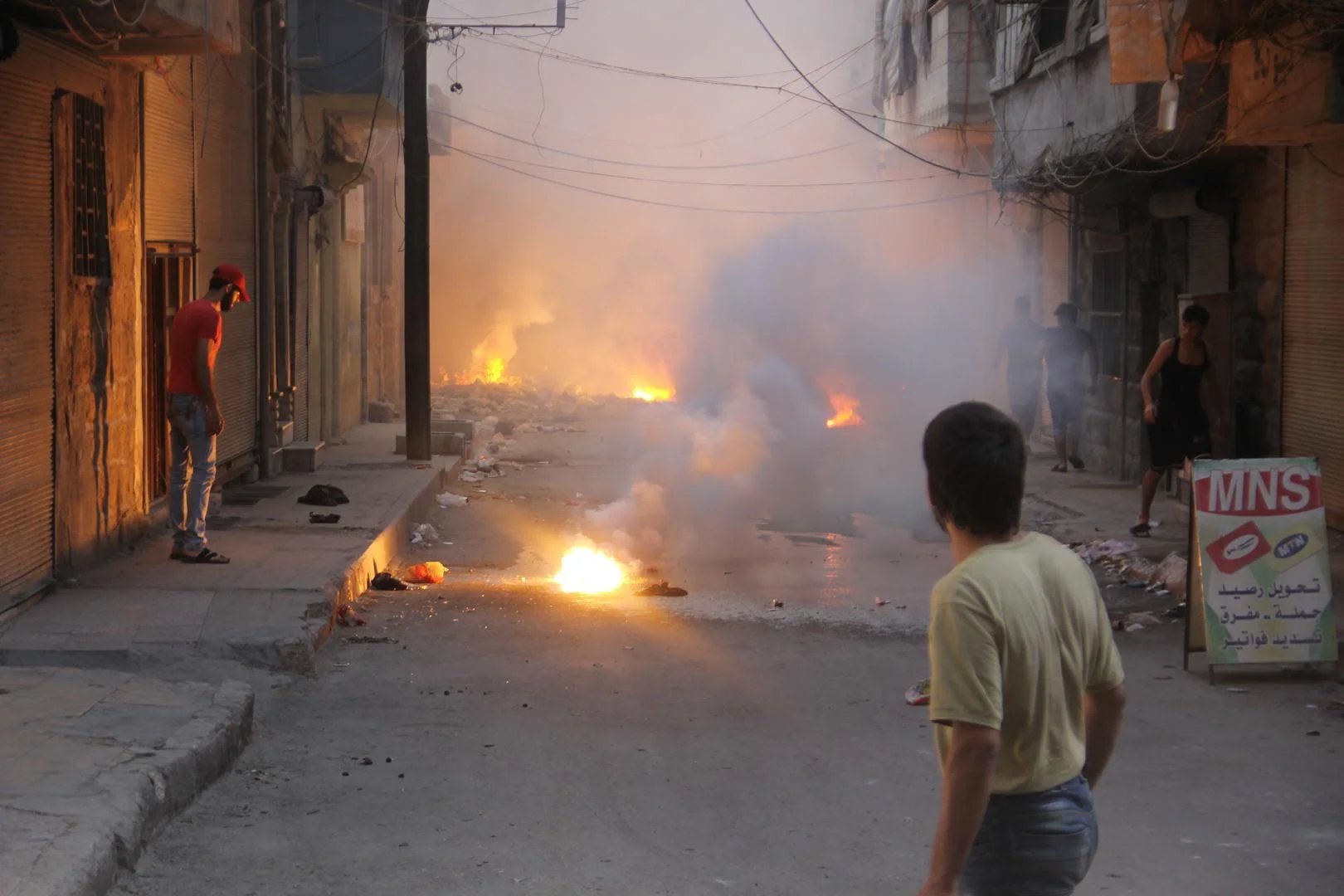UNGA First Committee on Disarmament and International Security, Delivered by Bonnie Docherty

At least four incendiary submunitions burn on the ground of a narrow street in the al-Mashhad neighborhood of opposition-held east Aleppo city immediately after an incendiary weapon attack on August 7, 2016. © 2016 Malek Tarboush
Delivered on behalf of the following 15 organizations: Amnesty International, Action on Armed Violence, Article 36, Campaña Colombiana Contra Minas, Center for Peace Education, Harvard Law School’s International Rights Clinic, Human Rights Watch, Humanity & Inclusion, Mines Action Canada, Nonviolence International Canada, PAX, Pax Christi Philippines, Peace Movement Aotearoa, Seguridad Humana en América Latina y el Caribe (SEHLAC), Women’s International League for Peace and Freedom
Thank you.
As dozens of healthcare professionals and burn survivor organizations declared in an open letter from last November, “Addressing incendiary weapons at the international level is a humanitarian imperative.” These groups, who have treated or experienced burn injuries first-hand, can speak with authority to the suffering of incendiary weapon victims.
Among the cruelest weapons of contemporary armed conflict, incendiary weapons inflict excruciating burns at the time of attack as well as lifelong physical, psychological, and socioeconomic suffering.
At the Convention on Conventional Weapons Review Conference in December 2021, a large number of high contracting parties expressed outrage at the weapons’ grievous humanitarian consequences. They also strongly supported proposed informal consultations to assess the adequacy of Protocol III on incendiary weapons, which is widely considered to have significant loopholes.
Unfortunately, the conference operated by consensus and the proposal was blocked by two states.
This development should be seen as a temporary setback not the end of the road, however. Widespread support for addressing the problem continues to exist. Furthermore, recent use in Ukraine, including this month, shows that incendiary weapons remain a current issue.
Human Rights Watch has reviewed visual evidence showing at least 37 attacks using surface-fired incendiary weapons since Russia’s full-scale invasion of Ukraine. Remnants of unguided 122mm incendiary Grad rockets have been positively identified at some of the impacted locations.
At this time, it is not possible to attribute responsibility for these attacks, but Russia and Ukraine both possess 122mm incendiary Grad rockets, a type previously used in eastern Ukraine in 2014 and in Syria in 2013–2019.
We urge states to build on the current diplomatic momentum and work to minimize the harm from incendiary weapons. At First Committee, states should:
Highlight the humanitarian consequences of incendiary weapons and acknowledge the importance of addressing concerns about the shortcomings of CCW Protocol III on incendiary weapons; and
Call for a review of Protocol III and amendments to address the negative humanitarian effects of incendiary weapons.
CCW high contracting parties should:
adopt a mandate at their November meeting to hold informal consultations to assess the adequacy of Protocol III; and
If that is blocked, hold discussions outside of the CCW to consider issues such as the concerns raised by incendiary weapons, the adequacy of national and international measures to address them, and ways to create stronger international standards.
Thank you.
The original article was published on the Human Rights Watch website


